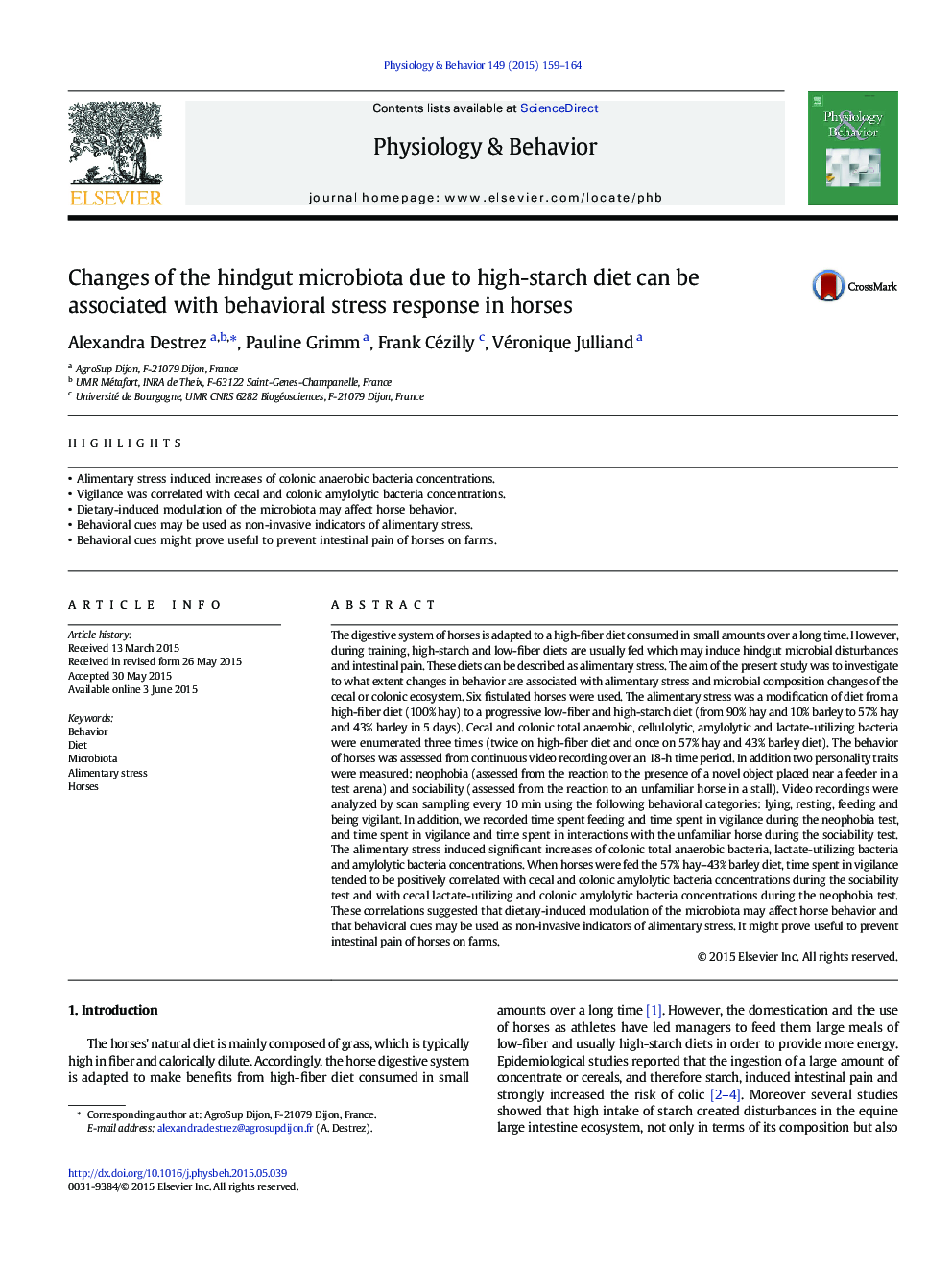| کد مقاله | کد نشریه | سال انتشار | مقاله انگلیسی | نسخه تمام متن |
|---|---|---|---|---|
| 5923573 | 1571168 | 2015 | 6 صفحه PDF | دانلود رایگان |
- Alimentary stress induced increases of colonic anaerobic bacteria concentrations.
- Vigilance was correlated with cecal and colonic amylolytic bacteria concentrations.
- Dietary-induced modulation of the microbiota may affect horse behavior.
- Behavioral cues may be used as non-invasive indicators of alimentary stress.
- Behavioral cues might prove useful to prevent intestinal pain of horses on farms.
The digestive system of horses is adapted to a high-fiber diet consumed in small amounts over a long time. However, during training, high-starch and low-fiber diets are usually fed which may induce hindgut microbial disturbances and intestinal pain. These diets can be described as alimentary stress. The aim of the present study was to investigate to what extent changes in behavior are associated with alimentary stress and microbial composition changes of the cecal or colonic ecosystem. Six fistulated horses were used. The alimentary stress was a modification of diet from a high-fiber diet (100% hay) to a progressive low-fiber and high-starch diet (from 90% hay and 10% barley to 57% hay and 43% barley in 5Â days). Cecal and colonic total anaerobic, cellulolytic, amylolytic and lactate-utilizing bacteria were enumerated three times (twice on high-fiber diet and once on 57% hay and 43% barley diet). The behavior of horses was assessed from continuous video recording over an 18-h time period. In addition two personality traits were measured: neophobia (assessed from the reaction to the presence of a novel object placed near a feeder in a test arena) and sociability (assessed from the reaction to an unfamiliar horse in a stall). Video recordings were analyzed by scan sampling every 10Â min using the following behavioral categories: lying, resting, feeding and being vigilant. In addition, we recorded time spent feeding and time spent in vigilance during the neophobia test, and time spent in vigilance and time spent in interactions with the unfamiliar horse during the sociability test. The alimentary stress induced significant increases of colonic total anaerobic bacteria, lactate-utilizing bacteria and amylolytic bacteria concentrations. When horses were fed the 57% hay-43% barley diet, time spent in vigilance tended to be positively correlated with cecal and colonic amylolytic bacteria concentrations during the sociability test and with cecal lactate-utilizing and colonic amylolytic bacteria concentrations during the neophobia test. These correlations suggested that dietary-induced modulation of the microbiota may affect horse behavior and that behavioral cues may be used as non-invasive indicators of alimentary stress. It might prove useful to prevent intestinal pain of horses on farms.
Journal: Physiology & Behavior - Volume 149, 1 October 2015, Pages 159-164
